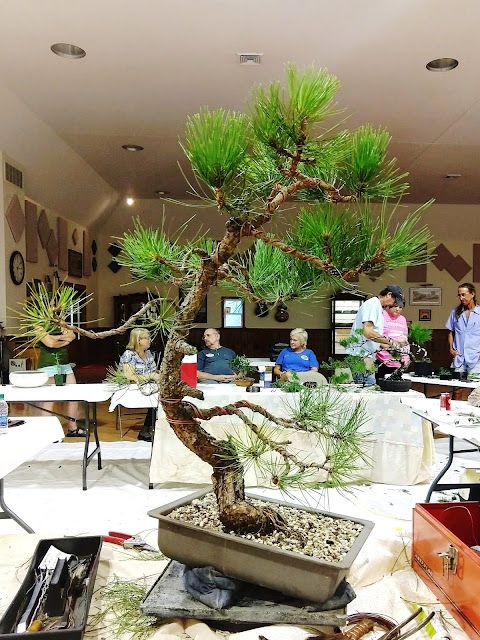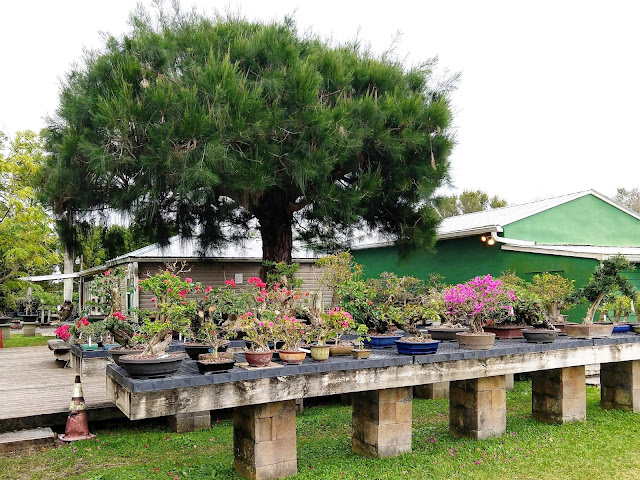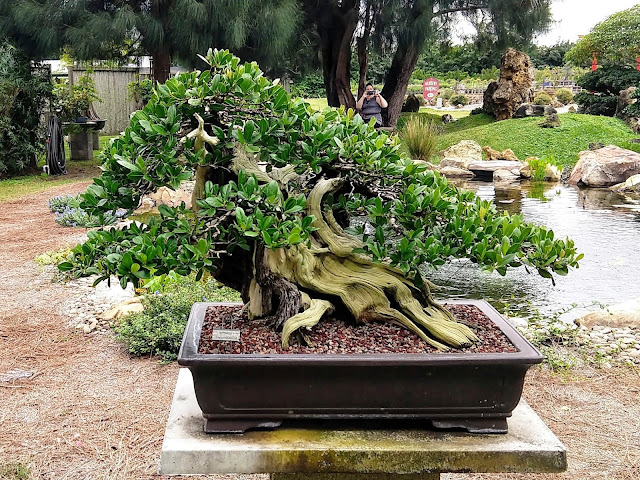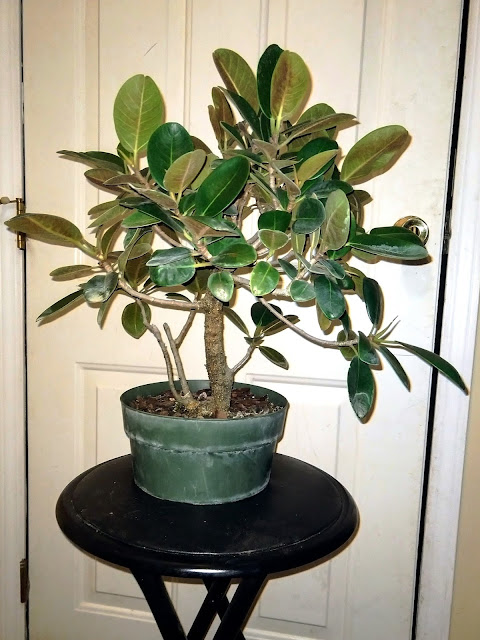That could have summed up my reaction a few weeks ago, when I heard Ryan Neil say that trees and shrubs photosynthesize through their bark as well as their foliage. They don’t photosynthesize as much through their bark, but they still do it. This has a number of implications for fall and winter care of temperate-zone trees.
(Readers of the Fort Wayne Bonsai Club newsletter has already seen this in my latest Stuff from Steve.)
First, a little botany review. At some point in late summer or fall, temperate species stop producing new foliage and direct all their resources to two purposes: producing more vascular tissue (bulking up), and storing carbohydrates – sugars and starches - for the following spring’s growth push. Just when they make the transition varies from species to species; for example, some maples (Acer) switch over as early as late July, while Austrian pine (Pinus nigra) does so in early-to-mid September. But they all make that shift.
Inside every plant cell is a structure called a vacuole, enclosed in a semipermeable membrane. Some plant cells have more than one, and fungi and some microorganisms also have vacuoles. However, to keep this discussion simple, I'm going to stick to a scenario of a plant cell with one large vacuole. Here is a diagram. Notice that the vacuole can, and often does, take up more than half the space inside the cell.
 |
"V" marks the vacuole.
|
During spring and summer, the vacuoles in temperate-zone plants contain water and not much else. But as the growing season progresses, sugars and starches for the next spring are stored up, dissolved, in the vacuoles. At first only what is left over from foliage production and other metabolic needs is stored. Once the plant - for our purposes a bonsai or bonsai-in-the-making - makes the late-season switchover described above, carbohydrates storage goes into high gear.
And while stored in the vacuoles waiting for spring (for any who may not know) those carbohydrates serve another function: antifreeze! Water that contains anything else in solution freezes at a lower temperature than pure water – sea water freezes at 29 degrees F (1.6 degrees C), for example. And the greater the concentration of solutes in the water, the lower the temperature at which it freezes.
Trees and shrubs continue to produce and store photosynthates as fall progresses. That’s true for deciduous trees, even after leaf fall, as well as for conifers, because of the aforementioned photosynthesis in the bark. Production and storage slow down as temperatures drop and day lengths shorten, but they don’t stop. In fact those processes don’t stop altogether even when ambient temperatures are well below freezing because of residual heat inside the tree’s tissues. It's true that for all practical purposes, trees can be considered dormant at temperatures below 42 degrees F (5 degrees Celsius); but carbohydrate storage in the vacuoles continues past the winter solstice, albeit at a very low level.
Remember that the higher the concentration of dissolved substances in water, the lower the temperature at which that water freezes. This means that as fall goes along and more and more dissolved carbohydrates are stored in a tree’s cells, the more cold-resistant that tree becomes and the deeper the cold required to kill it. As a matter of fact, the strengthening of the tree’s cold-hardiness stays pretty closely in step with the falling temperatures! Temperatures around here in mid-December are colder than in mid-October (all else being equal), but by December the tree has more “antifreeze” stored up in its cells than it had in October. Temperatures in the northern hemisphere usually bottom out in mid-January (give or take a bit) and by then carbohydrate concentration in the vacuoles has reached its strongest. (To me, the elegance of the whole setup demonstrates the sheer skill of the Creator.)
What does this mean for fall and winter care of bonsai and bonsai-in-the-making?
First, if a tree needs any fall pruning or working, do it as soon as possible after the transition away from foliage growth has begun; make sure not to do it before that. You want the tree to have as much time as possible to heal over the trauma, but you also don't want to interfere with production of leaves and needles - primary photosynthesizing surfaces – until that production stops naturally.
Second, keep up light fertilizing through the fall, and even (very light) into early winter. The tree will still benefit by it. And the same goes for water: keep the soil at least moist unless and until it freezes. (For any who don't know, freezing won’t harm a temperate tree’s roots; neither will staying unfrozen. But do try to avoid alternating freeze-and-thaw.)
Third, and contrary to some conventional wisdom, it’s best to give all your trees some light throughout the cold months, even your deciduous ones. Remember that they can photosynthesize through the bark. At the same time, if you can’t give your deciduous trees any light during the winter, you won’t lose them as long as you can keep them below 42 degrees F (5 C.). They just won’t get off to quite as strong a start in the spring.
One more thing: please remember that all of this applies only to temperate-zone trees. Tropicals are another ball of wax – or should I say “of bark”?
:-) :-) :-)

















